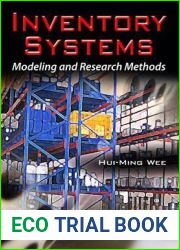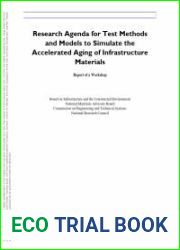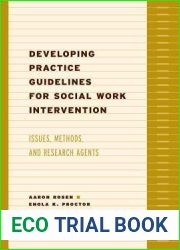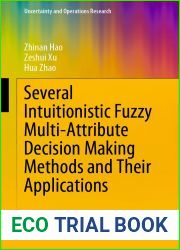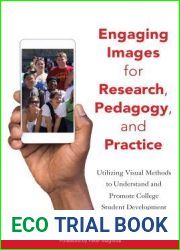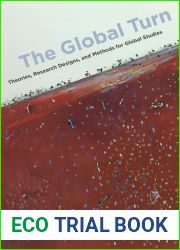
BOOKS - Methods for Applied Macroeconomic Research

Methods for Applied Macroeconomic Research
Author: Fabio Canova
Year: December 1, 2006
Format: PDF
File size: PDF 5.1 MB
Language: English

Year: December 1, 2006
Format: PDF
File size: PDF 5.1 MB
Language: English

The book "Methods for Applied Macroeconomic Research" by Fabio Canova provides a comprehensive set of techniques for applied macroeconomists, bridging the gap between theoretical and applied work. It covers the latest advances in mathematical, statistical, and computational tools that have reshaped the field over the past two decades. This graduate-level textbook is designed for readers familiar with modern macroeconomic theory, econometrics, and computational programming using RATS, MATLAB, or Gauss. The book takes a unique approach, starting with a class of dynamic equilibrium models and finding an approximate linear representation of the decision rules. It then describes the methods needed to estimate the parameters, examining their fit to the data. This quantitative perspective and solid dynamic theory background are what set this book apart from traditional graduate textbooks in macroeconomics and econometrics. The book is divided into four parts: Part I provides an introduction to the basic concepts and tools of dynamic equilibrium models, including the basics of the theory, calibration, and estimation. Part II delves into more advanced topics such as nonlinear methods, time-varying parameters, and non-Gaussian distributions.
В книге «Методы прикладных макроэкономических исследований» Фабио Канова представлен исчерпывающий набор методик для прикладных макроэкономистов, преодолевающих разрыв между теоретической и прикладной работой. Он охватывает последние достижения в области математических, статистических и вычислительных инструментов, которые изменили эту область за последние два десятилетия. Этот учебник для выпускников предназначен для читателей, знакомых с современной макроэкономической теорией, эконометрикой и вычислительным программированием с использованием RATS, MATLAB или Gauss. Книга использует уникальный подход, начиная с класса моделей динамического равновесия и находя приблизительное линейное представление правил принятия решений. Затем описываются методы, необходимые для оценки параметров, изучения их соответствия данным. Эта количественная перспектива и твердый динамический теоретический фон - то, что отличает эту книгу от традиционных учебников для выпускников по макроэкономике и эконометрике. Книга разделена на четыре части: Часть I содержит введение в основные понятия и инструменты моделей динамического равновесия, включая основы теории, калибровки и оценки. Часть II углубляется в более продвинутые темы, такие как нелинейные методы, изменяющиеся во времени параметры и негауссовы распределения.
livre « Méthodes de recherche macroéconomique appliquée » de Fabio Canova présente un ensemble complet de techniques pour les macroéconomistes appliqués qui comblent le fossé entre le travail théorique et le travail appliqué. Il couvre les dernières avancées dans le domaine des outils mathématiques, statistiques et informatiques qui ont changé ce domaine au cours des deux dernières décennies. Ce tutoriel d'études supérieures est destiné aux lecteurs familiers avec la théorie macroéconomique moderne, l'économétrie et la programmation informatique en utilisant RATS, MATLAB ou Gauss. livre adopte une approche unique, en commençant par la classe des modèles d'équilibre dynamique et en trouvant une représentation linéaire approximative des règles de décision. Ensuite, les méthodes nécessaires pour évaluer les paramètres, étudier leur conformité avec les données sont décrites. Cette perspective quantitative et un solide fond théorique dynamique sont ce qui distingue ce livre des manuels traditionnels pour diplômés en macroéconomie et en économétrie. livre est divisé en quatre parties : La partie I contient une introduction aux concepts de base et aux outils des modèles d'équilibre dynamique, y compris les bases de la théorie, de l'étalonnage et de l'évaluation. La deuxième partie est consacrée à des sujets plus avancés, tels que les méthodes non linéaires, les paramètres changeants dans le temps et les distributions non gaussiennes.
libro «Métodos de investigación macroeconómica aplicada» de Fabio Canova presenta un conjunto exhaustivo de metodologías para macroeconomistas aplicados que rompen la brecha entre el trabajo teórico y el aplicado. Abarca los últimos avances en las herramientas matemáticas, estadísticas y computacionales que han cambiado este campo en las últimas dos décadas. Este tutorial para graduados está dirigido a lectores familiarizados con la teoría macroeconómica moderna, la econometría y la programación computacional utilizando RATS, MATLAB o Gauss. libro adopta un enfoque único, comenzando con una clase de modelos de equilibrio dinámico y encontrando una representación lineal aproximada de las reglas de toma de decisiones. A continuación se describen los métodos necesarios para evaluar los parámetros, para estudiar su conformidad con los datos. Esta perspectiva cuantitativa y un sólido trasfondo teórico dinámico es lo que distingue este libro de los libros de texto tradicionales para graduados en macroeconomía y econometría. libro se divide en cuatro partes: Parte I contiene una introducción a los conceptos básicos y herramientas de los modelos de equilibrio dinámico, incluyendo los fundamentos de la teoría, calibración y evaluación. La Parte II profundiza en temas más avanzados, como los métodos no lineales, los parámetros cambiantes en el tiempo y las distribuciones no aussianas.
Il libro «Tecniche di ricerca macroeconomica applicata» di Fabio Canova presenta una serie completa di metodologie per macroeconomisti applicati che superano il divario tra lavoro teorico e lavoro applicativo. tratta degli ultimi progressi compiuti nel campo degli strumenti matematici, statistici e informatici che hanno cambiato il campo negli ultimi due decenni. Questo manuale per laureati è rivolto ai lettori che conoscono la teoria macroeconomica moderna, econometrica e programmazione computazionale utilizzando RATS, MATLAB o Gauss. Il libro utilizza un approccio unico, partendo da una classe di modelli di equilibrio dinamico e trovando una visione lineare approssimativa delle regole decisionali. Vengono quindi descritti i metodi necessari per valutare i parametri e esaminarne la conformità. Questa prospettiva quantitativa e un solido sfondo teorico dinamico sono ciò che distingue questo libro dai libri di testo tradizionali per i laureati in macroeconomia ed econometrica. Il libro è suddiviso in quattro parti: la parte I contiene un'introduzione ai concetti e agli strumenti di base dei modelli di equilibrio dinamico, inclusi i fondamenti di teoria, calibrazione e valutazione. La parte II si approfondisce su temi più avanzati, come i metodi non lineari, i parametri che cambiano nel tempo e la distribuzione non aussea.
Das Buch „Methods of Applied Macroeconomic Research“ von Fabio Canova stellt eine umfassende Reihe von Techniken für angewandte Makroökonomen vor, die die Lücke zwischen theoretischer und angewandter Arbeit schließen. Es deckt die neuesten Fortschritte in mathematischen, statistischen und computergestützten Werkzeugen ab, die dieses Feld in den letzten zwei Jahrzehnten verändert haben. Dieses Graduiertenbuch richtet sich an ser, die mit moderner makroökonomischer Theorie, Ökonometrie und Computerprogrammierung mit RATS, MATLAB oder Gauss vertraut sind. Das Buch verfolgt einen einzigartigen Ansatz, indem es mit einer Klasse dynamischer Gleichgewichtsmodelle beginnt und eine ungefähre lineare Darstellung der Entscheidungsregeln findet. Dann werden die Methoden beschrieben, die erforderlich sind, um die Parameter zu bewerten und ihre Übereinstimmung mit den Daten zu untersuchen. Diese quantitative Perspektive und der solide dynamische theoretische Hintergrund unterscheiden dieses Buch von traditionellen hrbüchern für Absolventen in Makroökonomie und Ökonometrie. Das Buch ist in vier Teile gegliedert: Teil I bietet eine Einführung in die grundlegenden Konzepte und Werkzeuge dynamischer Gleichgewichtsmodelle, einschließlich der Grundlagen von Theorie, Kalibrierung und Bewertung. Teil II befasst sich mit fortgeschritteneren Themen wie nichtlinearen Methoden, zeitveränderlichen Parametern und nicht-gaußschen Verteilungen.
Zastosowane metody badań makroekonomicznych Fabio Canova przedstawia wyczerpujący zestaw technik stosowanych makroekonomistów w celu zlikwidowania luki między pracą teoretyczną i stosowaną. Obejmuje on ostatnie postępy w zakresie narzędzi matematycznych, statystycznych i obliczeniowych, które przekształciły pole w ciągu ostatnich dwóch dekad. Ten podręcznik jest dla czytelników znanych z nowoczesnej teorii makroekonomicznej, ekonometrii i programowania obliczeniowego przy użyciu RATS, MATLAB lub Gauss. Książka przyjmuje unikalne podejście, zaczynając od klasy dynamicznych modeli równowagi i znajdując przybliżoną liniową reprezentację reguł decyzji. Następnie opisano metody niezbędne do oceny parametrów, badania ich zgodności z danymi. Ta perspektywa ilościowa i solidne dynamiczne tło teoretyczne jest tym, co odróżnia tę książkę od tradycyjnych podręczników absolwentów na temat makroekonomii i ekonometrii. Książka podzielona jest na cztery części: Część I zawiera wprowadzenie do podstawowych koncepcji i narzędzi dynamicznych modeli równowagi, w tym podstaw teorii, kalibracji i oceny. Część II skupia się na bardziej zaawansowanych tematach, takich jak nieliniowe metody, zmienne parametry czasowe i rozkład nie-gausowski.
''
Fabio Canova'nın Uygulamalı Makroekonomik Araştırma Yöntemleri, teorik ve uygulamalı çalışma arasındaki boşluğu kapatmak için uygulamalı makroekonomistler için kapsamlı bir teknik seti sunar. Son yirmi yılda alanı dönüştüren matematiksel, istatistiksel ve hesaplama araçlarındaki son gelişmeleri kapsar. Bu lisansüstü ders kitabı, modern makroekonomik teori, ekonometri ve RATS, MATLAB veya Gauss kullanarak hesaplamalı programlamaya aşina olan okuyucular içindir. Kitap, bir dinamik denge modelleri sınıfından başlayarak ve karar kurallarının yaklaşık doğrusal bir temsilini bularak benzersiz bir yaklaşım benimsemektedir. Daha sonra parametreleri değerlendirmek, verilere uygunluğunu incelemek için gerekli yöntemler açıklanmaktadır. Bu nicel perspektif ve sağlam dinamik teorik arka plan, bu kitabı makroekonomi ve ekonometri üzerine geleneksel lisansüstü ders kitaplarından ayıran şeydir. Kitap dört bölüme ayrılmıştır: Bölüm I, teori, kalibrasyon ve değerlendirmenin temelleri de dahil olmak üzere dinamik denge modellerinin temel kavramlarına ve araçlarına bir giriş içermektedir. Bölüm II, doğrusal olmayan yöntemler, zaman değişkenli parametreler ve Gauss olmayan dağılımlar gibi daha gelişmiş konuları inceler.
تقدم أساليب أبحاث الاقتصاد الكلي التطبيقية لفابيو كانوفا مجموعة شاملة من التقنيات لخبراء الاقتصاد الكلي التطبيقيين لسد الفجوة بين العمل النظري والتطبيقي. وهو يغطي التطورات الأخيرة في الأدوات الرياضية والإحصائية والحسابية التي غيرت المجال على مدى العقدين الماضيين. هذا الكتاب المدرسي للخريجين مخصص للقراء المطلعين على نظرية الاقتصاد الكلي الحديثة والاقتصاد القياسي والبرمجة الحسابية باستخدام RATS أو MATLAB أو Gauss. يتخذ الكتاب نهجًا فريدًا، بدءًا من فئة من نماذج التوازن الديناميكية وإيجاد تمثيل خطي تقريبي لقواعد القرار. ثم يتم وصف الأساليب اللازمة لتقييم البارامترات ودراسة امتثالها للبيانات. هذا المنظور الكمي والخلفية النظرية الديناميكية المتينة هو ما يميز هذا الكتاب عن كتب الدراسات العليا التقليدية في الاقتصاد الكلي والاقتصاد القياسي. ينقسم الكتاب إلى أربعة أجزاء: يحتوي الجزء الأول على مقدمة للمفاهيم والأدوات الأساسية لنماذج التوازن الديناميكي، بما في ذلك أساسيات النظرية والمعايرة والتقييم. يتعمق الجزء الثاني في مواضيع أكثر تقدمًا مثل الأساليب غير الخطية والمعايير المتباينة زمنيًا والتوزيعات غير الغوسية.







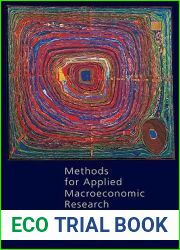


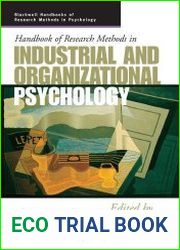


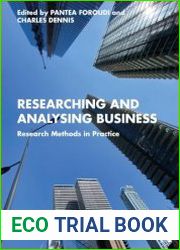
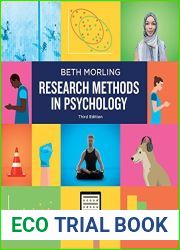
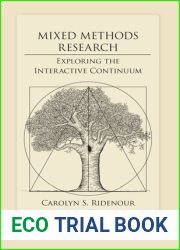

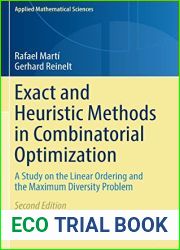
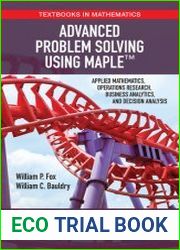


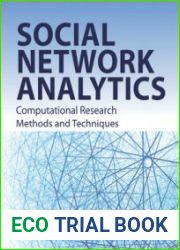


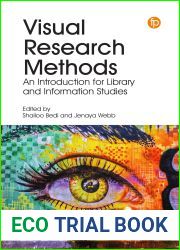
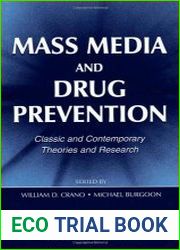


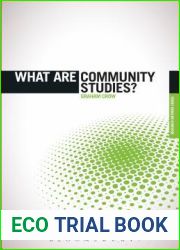
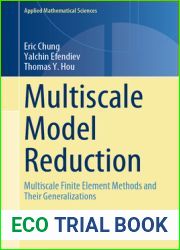

![[(Research Methods in Theatre and Performance )] [Author: Baz Kershaw] [Jun-2011] [(Research Methods in Theatre and Performance )] [Author: Baz Kershaw] [Jun-2011]](https://myecobook.life/img/7/707469_oc.jpg)
